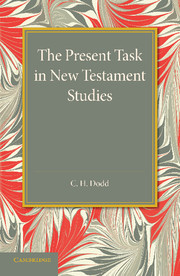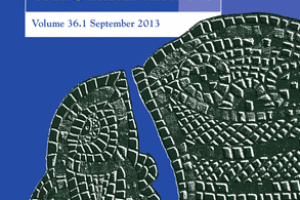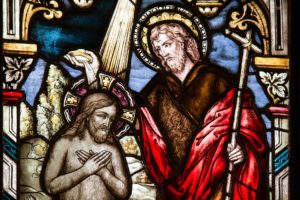This reprint of Dodd’s 1936 inaugural lecture at the University of Cambridge is a short treasure wherein Dodd lays bare the field of New Testament Studies in the period between the wars. He begins by gracefully offering a remembrance of his predecessor (C.F. Burkitt) and by offering his thesis: “It is my intention on this occasion to speak about the nature of [the labours of academic study], in the special field of New Testament studies, as it presents itself to us” (6).
The lecture commences with a discussion of the ideal procedures of NT study in a four-part schema: 1) Lower criticism (text critical questions) 1) higher criticism (authorship, provenance, historical context, etc.) 3) exegesis (only properly done with a working knowledge of Greek, Hebrew, Aramaic, and Syriac) 4) interpretation in the larger sense (with an eye toward the Old Testament, Judaism, Greek philosophy, and Hellenistic religion). While he acknowledges that this scheme is never fully realized (8), for Dodd, the level of expertise required for NT study is impressive indeed. The bar is set high.
Next, Dodd traces the historical contours in NT studies from the Enlightenment. He notes the major advances in previous generations, particularly in reference to lower criticism, which has set the stage for scholars of his age to ask further-reaching questions. The shift is palpable: “our science moved from anatomy to oeocology, the study of the organism in its habitat” (13). Nonetheless, Dodd hopes that the great manuscript and epigraphic discoveries of the early 20th century might begin a new golden age of text critical and historical inquiry. Dodd concludes this section by offering some critiques of German form-criticism, although he also commends certain aspects of the method.
Finally, Dodd concludes with his own evaluation of the current task of NT study. First, the project of “tidying up the situation left by the great critics of the last century” requires more attention (11). Second, and more explicitly, “The present task, as I believe, is to make interpretation the conscious and direct aim of our studies in what special field they may lie” (31) as critical studies have offered an adequate starting point. As an example, Dodd presents the ongoing issues surrounding the fourth gospel as an area in need of critical development. For Dodd, “if we can understand [the fourth Gospel], understand how it came to be and what it means, we shall know what early Christianity really was, and not until in some measure we comprehend the New Testament as a whole shall we be in position to solve the Johannine Problem” (29).
This volume provides a concise and incisive view of NT through the eyes of one of the 20th century’s most important critics. Dodd’s understanding of the field is utterly perceptive and many of his calls have been heeded in the last 80 years. Notably, his hope for a renaissance in lower criticism has been realised, galvanised by the finds from the Judean Desert twenty years after this lecture. Dodd’s ability to present the breadth of the field and its contours is impressive and a must-read today for students of the NT.
For those who have an interest in the method of NT studies and its history of research, I strongly recommend this volume. Cambridge University Press must be commended for making this seminal lecture readily available at an affordable price once again.
Review by Garrick Allen (ga22@st-andrews.ac.uk)
University of St Andrews





Leave a Reply
Your email is safe with us.